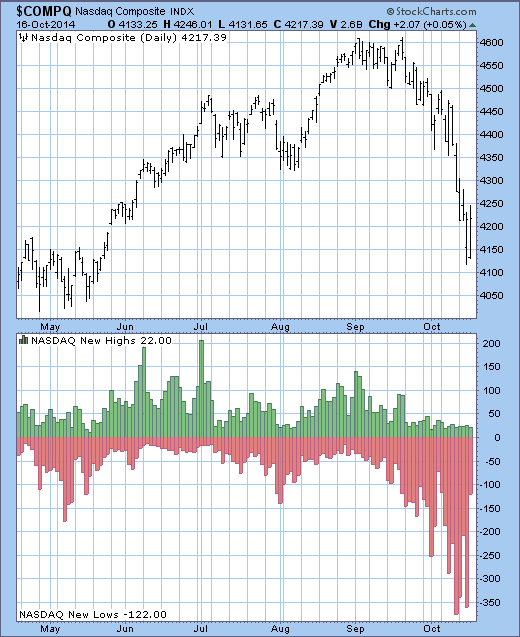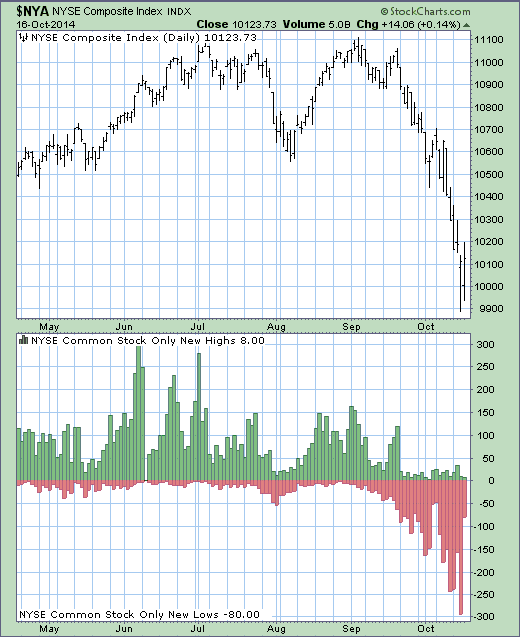From the Stock market section of the Weekly Market Update posted on 19th October, under the heading “What to do”:
“We have no idea what anyone else should do, apart from maintain a substantial cash reserve. Having exited all stock-market-related put options last week, the short-term plan for our own account is to begin averaging into January-2016 SSO (ProShares Ultra S&P500) put options following some additional rebounding activity over the next few weeks. We might also average into the unleveraged, actively-managed bear funds previously mentioned at TSI (BEARX and HDGE).
This plan assumes that a multi-week low was put in place last week. If this assumption is wrong and it turns out that the initial decline from the September peak is not yet over, then we will take no action. We will not enter bearish speculations when the market is in the midst of a sharp decline.“
I’m posting this brief comment to advise that if the US stock market opens strongly today (Tuesday) then I will probably take an initial position in the aforementioned SSO put options or some other puts. I want some coverage in case the rebound fails sooner than anticipated.
I also want to make readers aware that Almaden Minerals (AAU) and True Gold Mining (TGM.V) issued bullish press releases earlier today. The news will be discussed, as usual, in the next Weekly Update.
 Print This Post
Print This Post


